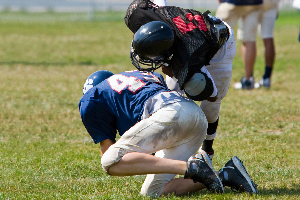A bursa is a small, fluid-filled sac that serves as a glide surface to reduce friction between body tissues. Bursae are found throughout the body, including three prominent in the knee.
 Direct trauma or overuse can injure your knee bursae. The two most common knee bursae injuries are the kneecap (prepatellar) bursa and the inner-knee (pes anserine) bursa.
Direct trauma or overuse can injure your knee bursae. The two most common knee bursae injuries are the kneecap (prepatellar) bursa and the inner-knee (pes anserine) bursa.
Kneecap bursa injury can occur with repeated kneeling on the front of the knee or by taking a direct blow or falling onto the knee. Common sports for such injuries include football and volleyball.
Inner-knee bursitis is common in runners when friction and stress on the bursa exists because of overuse. Tight hamstring muscles and incorrect training techniques, such as a lack of stretching and warm-up exercises, excessive hill or upward grade climbs, or sudden increases in mileage are common causes of inner-knee bursitis.
Either type of knee bursitis can produce symptoms that include:
- Pain or tenderness in the area of the bursa.
- Increasing pain with exercise or climbing stairs.
- Rapid swelling.
- Warm to the touch.
Bursitis treatment should include:
- Rest to the injured area by perhaps changing the activity.
- Ice and elevation to reduce swelling.
- Anti-inflammatory medication if recommended or prescribed by your doctor.
In some cases, if swelling is significant, draining (aspirating) the bursa may be needed to treat the symptoms. An injection of anesthetic and steroid may provide prompt relief.
Bursitis can be prevented by wearing kneepads to avoid contact and protect the bursal area. You also can rest your knees by switching activities to avoid overuse and prolonged stress and apply ice after exercising.
Share comments or questions on this information email: sports.medicine@marshfieldclinic.org.
